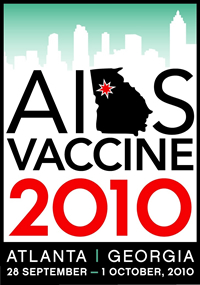HIV researchers are becoming increasingly bold about using the “cure” word in reference to HIV/AIDS, even though nobody has been cured besides the “Berlin patient,” Timothy Brown, who had a fortuitous combination of hematopoetic stem cell transplant from a genetically HIV-resistant donor. Sometimes researchers use the term “functional cure,” meaning under control without drugs, to be distinct from “sterilizing cure” or “eradication,” meaning the virus is gone from the body. A substantial obstacle is that HIV integrates into the DNA of some white blood cells.
HIV cure research is part of the $35.6 million, five-year grant recently awarded by the National Institutes of Health to Yerkes/Emory Vaccine Center/Emory Center for AIDS Research. Using the “shock and kill” approach during antiviral drug therapy, researchers will force HIV (or its stand-in in non-human primate research, SIV) to come out of hiding from its reservoirs in the body. The team plans to test novel “latency reversing agents” and then combine the best one with immunotherapeutic drugs, such as PD-1 blockers, and therapeutic vaccines.
The NIH also recently announced a cluster of six HIV cure-oriented grants, named for activist Martin Delaney, to teams led from George Washington University, University of California, San Francisco, Fred Hutchinson Cancer Research Center, Wistar Institute, Philadelphia, Beth Israel Deaconess Medical Center and University of North Carolina. Skimming through the other teams’ research plans, it’s interesting to see the varying degrees of emphasis on “shock and kill”/HIV latency, enhancing the immune response, hematopoetic stem cell transplant/adoptive transfer and gene editing weaponry vs HIV itself.









